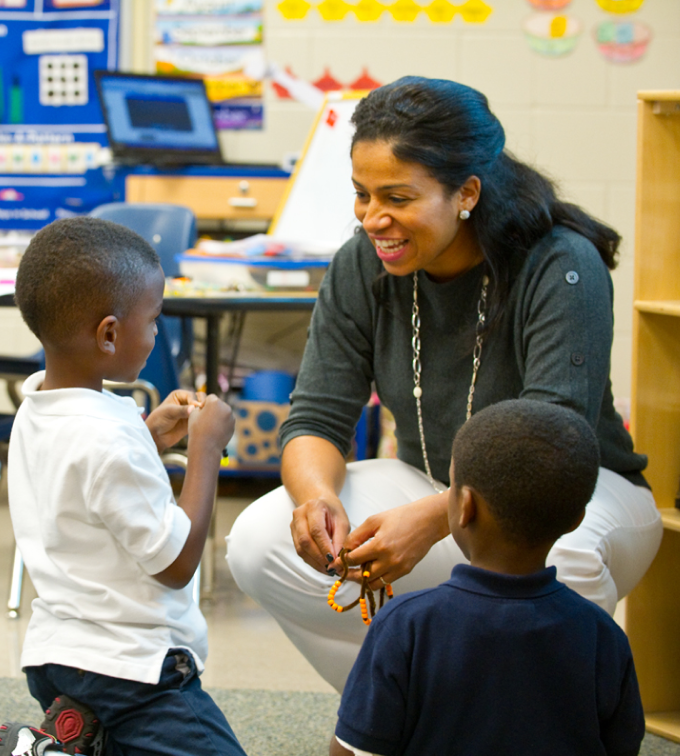Top Primary Science Tuition Singapore to Help Your Child Excel
Top Primary Science Tuition Singapore to Help Your Child Excel
Blog Article
A Comprehensive Guide to the Various Knowing Techniques in Primary Science Guideline
The expedition of diverse learning approaches in key science instruction presents a possibility for teachers to enhance pupil interaction and comprehension substantially. By checking out hands-on understanding methods, inquiry-based approaches, and joint methods, we can identify reliable practices that deal with numerous learning designs. Furthermore, the assimilation of innovation and differentiated guideline plays a crucial duty in promoting a comprehensive atmosphere. Nonetheless, the concern continues to be: how can these approaches be effectively carried out in the classroom to maximize their influence? The solution hinges on a better analysis of each strategy and its ramifications for training scientific research.

Hands-On Learning Strategies
Hands-on understanding methods play a pivotal function in key scientific research guideline, engaging pupils in energetic exploration and experimentation. These techniques enable learners to engage straight with sensations and products, cultivating a much deeper understanding of clinical ideas. By making use of manipulatives, versions, and real-life experiments, educators produce an atmosphere where trainees can observe, hypothesize, and check their ideas.
Such methods not only enhance understanding but additionally grow critical reasoning and analytic abilities. When trainees join activities like developing basic devices, planting seeds, or performing chemical responses, they are motivated to ask concerns and seek solutions via their very own monitorings. This experiential method helps to debunk complicated scientific concepts, making them a lot more easily accessible and relatable.
In addition, hands-on discovering advertises collaboration amongst peers, as trainees typically operate in teams to perform experiments or share findings. This synergy not only improves their discovering experience but additionally establishes essential social abilities. Ultimately, integrating hands-on strategies in primary scientific research instruction cultivates a lifelong love of understanding and curiosity concerning the all-natural world, laying a solid foundation for future academic searches in scientific research and beyond.
Inquiry-Based Discovering
Inquiry-based learning is an educational method that urges students to ask concerns, investigate phenomena, and create their own understanding of scientific ideas. This approach moves the emphasis from standard teacher-led guideline to a more student-centered experience, where learners take the effort in their instructional journey. By promoting interest, inquiry-based discovering advertises much deeper involvement with the material, enabling pupils to check out topics in a significant context.
In practice, this strategy usually includes hands-on experiments, monitorings, and crucial thinking tasks that align closely with the scientific technique. Trainees are motivated to create theories, layout examinations, and analyze data, which cultivates vital abilities such as logical and analytical thinking. The function of the educator in this structure is to assist in expedition, assisting trainees with the query procedure while motivating independent thought and partnership.
Additionally, inquiry-based discovering supports a feeling of possession over the discovering process, motivating students to seek expertise actively. This technique not only enhances understanding of clinical principles yet additionally promotes a lifelong love for learning, furnishing trainees with the skills essential to browse a significantly intricate world.
Collaborative Learning Approaches
Joint discovering approaches equip pupils to participate in significant communications with peers, fostering a shared obligation for their educational results. In key science instruction, these methods urge learners to interact to site check out clinical principles, resolve issues, and perform experiments (primary science tuition Singapore). By joining group activities, trainees can take advantage of varied perspectives, enabling richer understanding and retention of clinical knowledge
One key aspect of collective understanding is the emphasis on communication skills. Students need to express their ideas, pay attention proactively to others, and negotiate ideas, all of which are important competencies in both real-world and scholastic contexts. This social communication not only boosts their understanding of clinical principles yet also promotes synergy and dispute resolution skills.
Furthermore, collective knowing typically results in enhanced inspiration and engagement. When students see the value of their payments within a team, they are more probable to take possession of their discovering journey. Educators can facilitate this process by designing organized team tasks that straighten with educational program goals while giving support on efficient collaboration strategies. Generally, incorporating collaborative learning strategies in main science direction cultivates a vibrant learning setting that prepares trainees for future scholastic and social challenges.
Modern Technology Integration in Scientific Research
The assimilation of technology in main scientific research guideline enhances discovering experiences by giving innovative devices and resources that support different mentor techniques, consisting of collaborative knowing - primary science tuition Singapore. Using electronic platforms, simulations, and interactive applications enables pupils to involve deeply with clinical concepts, promoting a more hands-on method to discovering
Online research laboratories, for example, make it possible for students to conduct experiments securely and efficiently, advertising inquiry-based knowing. These tools can mimic real-world scientific situations, enabling students to visualize complex processes that would certainly be difficult to replicate in a typical classroom setting. Furthermore, modern technology cultivates interaction and collaboration among students, as they can share findings and work together on tasks via online platforms.
Additionally, multimedia discussions and academic videos can improve lessons by providing to diverse learning designs, making abstract principles extra obtainable. Information analysis devices likewise encourage trainees to collect and analyze scientific information, enhancing essential believing skills. On the whole, the calculated consolidation of modern technology in main science direction not only improves interaction however also prepares trainees for a technologically sophisticated society, furnishing them with important abilities for future scientific ventures.
Set Apart Direction Approaches
Distinguished guideline strategies are necessary for addressing the diverse demands of learners in main scientific research education. These methods enable teachers to customize their teaching techniques to fit differing abilities, rate of interests, and finding out styles within the class. By employing distinguished guideline, teachers can produce a comprehensive environment that fosters interaction and boosts understanding of scientific principles.
One reliable strategy is to make use of adaptable organizing, which allows students to collaborate with peers at similar skill levels or with differing point of views. This technique motivates peer understanding and advertises essential reasoning. In addition, supplying options in tasks can equip trainees, allowing them to select projects that reverberate with their passions while still satisfying curricular purposes.
Additionally, integrating tiered projects is another beneficial technique. By making tasks with varying levels of complexity, instructors can make certain that all trainees are properly tested, no matter of their proficiency. Making use of developmental evaluations to evaluate understanding check this site out more allows teachers to change their training methods dynamically, ensuring that each student receives the assistance they read the article need.
Inevitably, carrying out distinguished instruction methods in primary scientific research education and learning not only boosts trainee learning end results but additionally cultivates an interest for science, preparing trainees for future scholastic searches.

Conclusion
In recap, reliable primary scientific research guideline necessitates a complex strategy that encompasses hands-on learning, inquiry-based approaches, and collaborative strategies. The integration of innovation and differentiated direction further satisfies varied discovering styles, cultivating an environment for expedition and important reasoning. By applying these approaches, instructors can enhance trainee interaction and comprehension, eventually nurturing a long-lasting interest for science and query. Such thorough methodologies are necessary for creating informed and interested future scientists.
The expedition of diverse discovering techniques in main science direction provides a chance for educators to enhance student engagement and understanding significantly.Hands-on learning strategies play a crucial duty in key scientific research direction, engaging students in energetic expedition and testing.Inquiry-based knowing is an instructional approach that urges trainees to ask questions, explore phenomena, and construct their very own understanding of clinical ideas.Collaborative understanding strategies equip students to involve in significant interactions with peers, promoting a shared responsibility for their instructional results. Overall, including collaborative understanding techniques in primary scientific research instruction grows a dynamic understanding atmosphere that prepares students for future academic and social obstacles.
Report this page